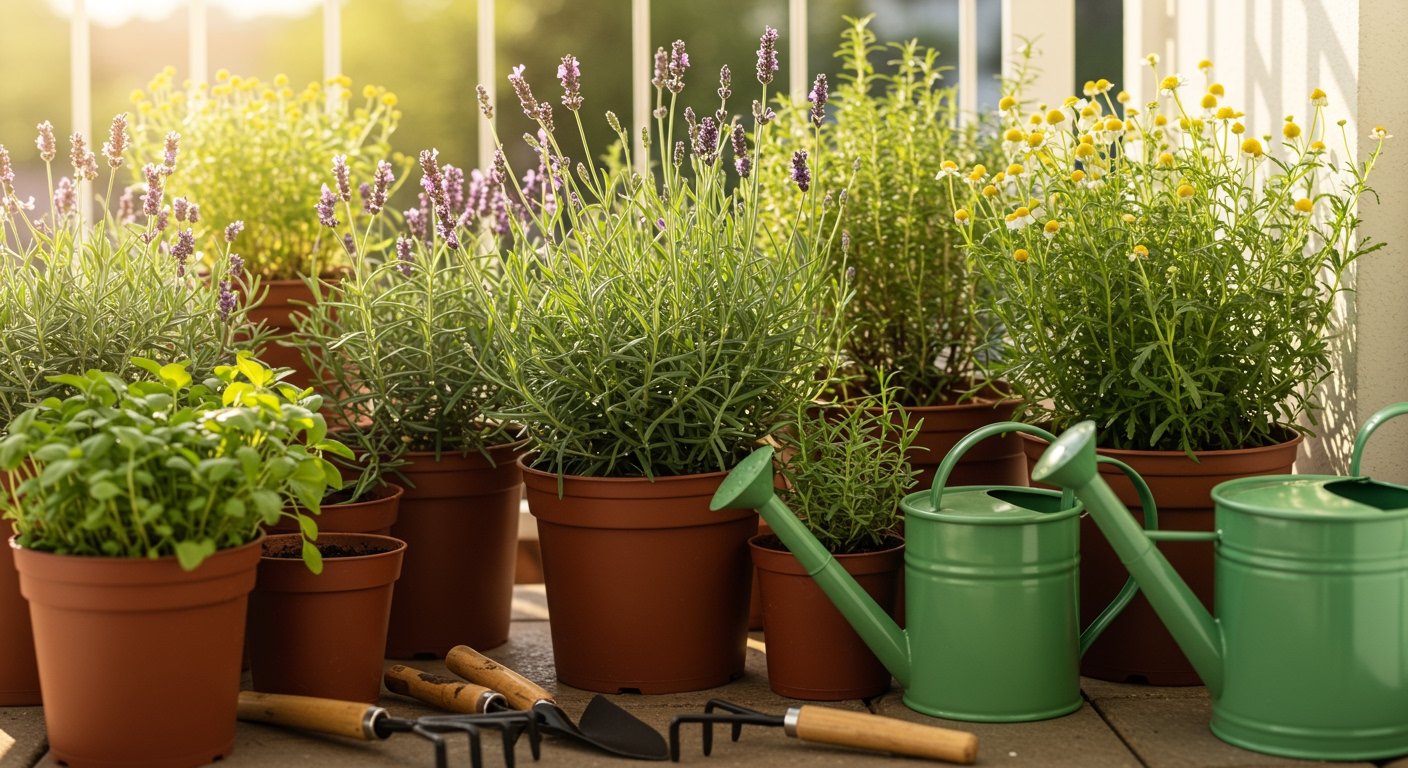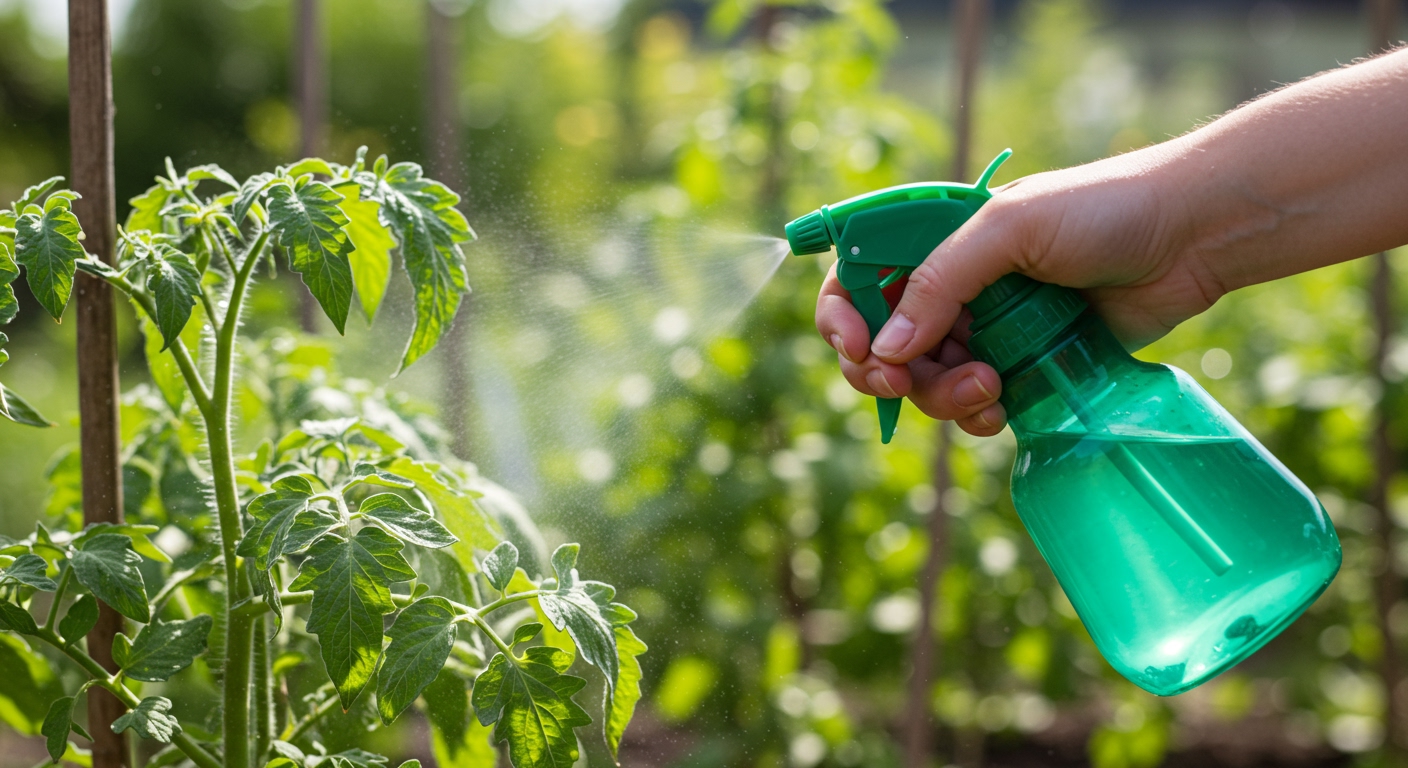Welcome, savvy gardener! Have you ever marvelled at nature’s intricate balance, where plants seem to thrive in perfect harmony? This isn’t just a happy accident; it’s the age-old secret of companion planting, a traditional gardening practice that’s now being rediscovered for its incredible benefits. This comprehensive companion planting guide for vegetable gardens will show you how to cultivate that very harmony in your own edible landscape.
So, what exactly is companion planting? Simply put, it’s the strategic placement of different plant species in close proximity to enhance their growth, health, and productivity. Think of it as creating a symbiotic community in your garden, where neighbors help each other flourish.
Why does it matter now more than ever? In an era where sustainable, organic practices are paramount, companion planting offers natural pest control, maximizes yield in limited spaces, and reduces the need for chemical interventions. It’s about working with nature, not against it. This guide will demystify the science and art of companion planting, making it accessible for vegetable gardens of all sizes, from expansive plots to humble container gardens.
I. Understanding the Science: The “Why” Behind the “What”
While many companion planting practices are rooted in generations of traditional wisdom, a growing body of scientific research now supports many of its benefits. It’s not just folklore; there are observable, measurable mechanisms at play that make certain plant pairings so effective.
The Mechanisms at Play:
- Chemical Messaging & Allelopathy: Plants aren’t silent; they communicate! They release organic compounds through their roots or leaves that can affect neighbors, either positively (e.g., promoting growth) or negatively (e.g., inhibiting weed growth or deterring pests).
- Physical Interactions: Some plants offer practical support, like providing shade for sun-sensitive companions or serving as a natural trellis for climbing vines. Others act as a living mulch, covering bare soil and keeping it cool and moist.
- Resource Sharing & Cycling: Different root depths mean plants can access nutrients and water from various soil layers, optimizing uptake for the entire plant community. Nitrogen-fixing plants, for instance, enrich the soil for their neighbors.
- Ecosystem Enhancement: Companion planting promotes biodiversity both above and below ground. It creates a more resilient ecosystem by attracting beneficial insects, supporting soil microbes, and generally making your garden a healthier place.

III. The Multifaceted Benefits of Strategic Plant Pairings
When done thoughtfully, companion planting offers a cascade of advantages for your vegetable garden.
Natural Pest Management: Your Garden’s Bodyguards:
- Attracting Beneficial Insects: Nectar-rich flowers and aromatic herbs can lure predators like ladybugs, lacewings, parasitic wasps, and hoverflies, which feast on common garden pests. They also attract essential pollinators, boosting fruit set.
- Deterring Pests with Scent: Many aromatic plants emit strong scents that mask the smell of target crops, making it harder for pests to find their desired meal. Others release repellent compounds that pests simply dislike.
- Trap Cropping: Some plants are strategically grown to be more attractive to pests than your main crops, luring them away. Nasturtiums, for example, are a well-known trap crop for aphids.
- Visual & Physical Barriers: Densely planted companions can confuse pests or physically impede their movement and egg-laying, adding an extra layer of protection.
Improving Soil Health & Nutrient Cycling:
- Nitrogen Fixers: Legumes such as beans, peas, and clover have a special superpower: they host bacteria that convert atmospheric nitrogen into a form usable by plants, enriching the soil for themselves and their neighbors [1].
- Deep-Rooted Aerators: Plants with deep taproots can break up compacted soil, improving drainage and drawing up nutrients from deeper layers, making them accessible to shallower-rooted plants.
- Living Mulches: Low-growing plants can cover bare soil, suppressing weeds, retaining precious moisture, and regulating soil temperature, all while contributing organic matter.
Enhanced Plant Growth & Yield:
Directly and indirectly, through improved conditions, reduced stress, and better access to nutrients, well-chosen companions can lead to more vigorous growth and a more abundant harvest.
Disease Prevention:
By promoting healthier plant communities and reducing pest pressure, companion planting can significantly reduce the spread of soil-borne pathogens and airborne diseases [2].
Optimizing Space & Resources:
Intelligently pairing plants allows for more efficient use of garden real estate, especially valuable in smaller gardens or raised beds.
IV. Core Principles for Successful Companion Planting
While specific pairings are important, understanding the underlying principles will empower you to create your own successful combinations.
- Observation is Key: Every garden is unique. What works perfectly for one gardener might need adjustment for another. Trial and error, combined with careful observation, are crucial parts of the process.
- Diversity is Strength: Aim for a polyculture approach rather than monoculture. A diverse garden ecosystem is more resilient to pests and diseases.
- Know Your Plants’ Needs: Group plants with similar light, water, and nutrient requirements to ensure all companions thrive.
- Consider Growth Habits: Match tall plants with shade-lovers (like corn providing shade for lettuce) or use sturdy plants as supports for climbers (like sunflowers for cucumbers).
- Understand Plant Families: Be aware that plants within the same family (e.g., nightshades, brassicas) often share common pests and diseases, so separating them or rotating them is often wise.
- Beware of Invasive Species: Some beneficial companions, like mint, can become aggressive. Consider planting them in containers sunk into the ground to control their spread.
- Crop Rotation Still Matters: Companion planting complements, but does not replace, good crop rotation practices. Continue rotating your plant families yearly to prevent disease buildup and optimize soil health.
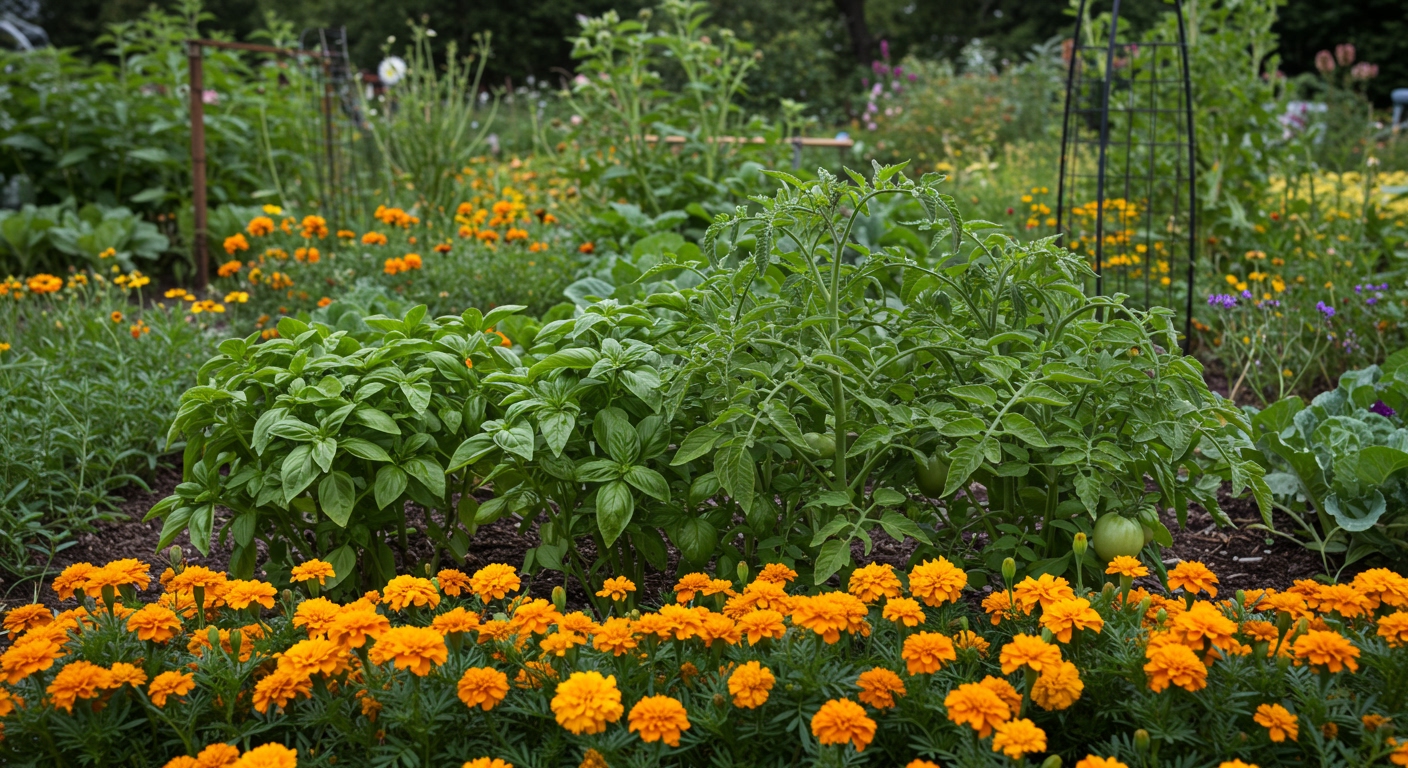
V. Essential Companion Plant Pairings: A Detailed Guide
Here’s a practical look at popular vegetable pairings for your comprehensive companion planting guide for vegetable gardens.
A. Tomatoes (Heavy Feeders, Solanaceae Family)
- Good Companions:
- Basil: Deters thrips and hornworms, possibly enhances flavor, attracts pollinators.
- Marigolds (French): Repel root-knot nematodes, whiteflies, hornworms, and aphids; can act as a trap crop.
- Borage: Attracts pollinators (especially bees), deters tomato hornworms, provides trace minerals.
- Carrots: Aerate soil, attract parasitic wasps (which prey on hornworms).
- Chives / Garlic / Onions: Repel aphids, nematodes, spider mites, reduce fungi/diseases.
- Beans (Bush): Nitrogen fixers, improve soil, increase air circulation.
- Parsley: Attracts beneficial insects (ladybugs), acts as a living mulch.
- Dill: Attracts predatory insects.
- Bad Companions:
- Brassicas: Compete for nutrients (heavy feeders).
- Corn: Attracts the same pests (corn earworm/tomato hornworm).
- Fennel: Can stunt growth.
- Peppers & Potatoes: As nightshades, they share diseases; avoid planting in the same spot consecutively.
B. Brassicas (Cabbage, Broccoli, Kale, Brussels Sprouts, etc.)
- Good Companions:
- Alliums (Onions, Garlic, Leeks, Chives): Pungent odor repels common brassica pests (cabbage worm, aphids, whiteflies, flea beetles), improve flavor.
- Beans (Bush/Pole): Fix nitrogen, which brassicas need.
- Borage: Attracts pollinators and beneficial insects, deters cabbage worms.
- Celery: Repels cabbage worms, shares growing requirements.
- Dill: Enhances growth and flavor, repels cabbage loopers.
- Mint (in containers): Confuses flea beetles, deters cabbage white butterflies.
- Marigolds: Control nematodes, deter many pests, attract pollinators.
- Nasturtiums: Excellent trap crop for aphids and cabbage worms.
- Rosemary & Sage: Strong scents deter cabbage moths, carrot flies, flea beetles.
- Spinach / Clover: Act as living mulches, suppress weeds, retain moisture.
- Bad Companions:
- Strawberries: Can be outcompeted or negatively affected.
- Nightshades (Tomatoes, Peppers, Eggplants, Potatoes): Can share diseases and prefer different soil pH.
- Heavy Feeders (Corn, Asparagus, Pumpkins, Watermelons): Compete for nutrients.
C. Cucumbers (Heavy Waterers)
- Good Companions:
- Borage: Repels squash bugs, attracts pollinators, adds trace minerals.
- Dill: Attracts predatory insects (parasitic wasps), pollinators, may improve flavor.
- Corn / Sunflowers: Provide natural trellises for climbing vines and shade.
- Beans / Peas: Nitrogen fixers, aid growth, attract pollinators.
- Radishes: Repel cucumber beetles and flea beetles, act as weed suppressors, space-efficient.
- Onions / Chives: Strong scent repels pests.
- Marigolds / Nasturtiums: Repel beetles, thrips, and other destructive insects; nasturtiums can be a trap crop.
- Celery: Shares water needs, repels whiteflies.
- Lettuce: Light feeder, doesn’t compete for nutrients.
- Bad Companions:
- Potatoes: Compete for nutrients and water, prone to blight.
- Aromatic Herbs (Sage, Basil, Rosemary, Mint): Can stunt growth or affect subtle flavor; mint is invasive.
- Melons / Squash / Pumpkins / Zucchini: Same family, attract identical pests.
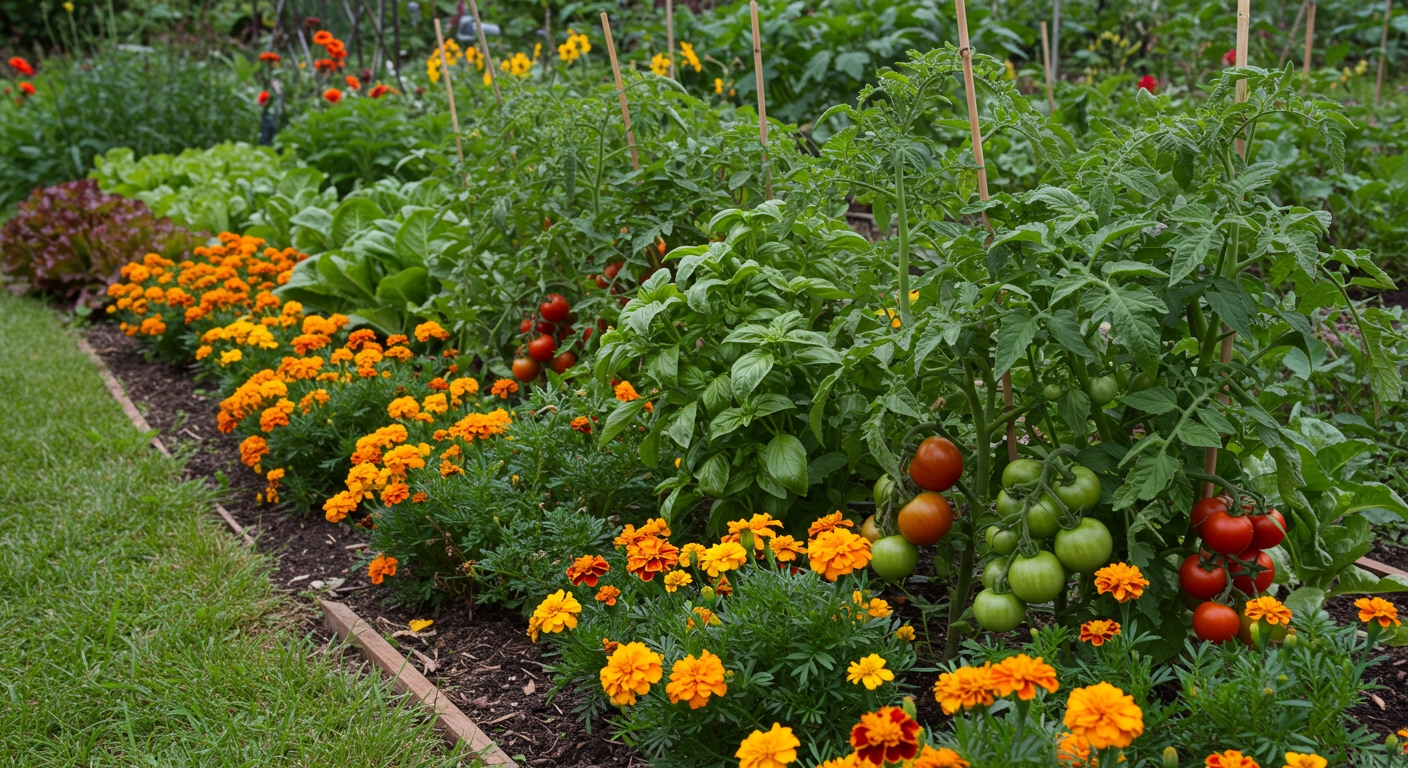
D. Peppers & Eggplants (Solanaceae Family)
- Good Companions:
- Basil: Deters thrips and aphids, can improve growth.
- Marigolds: Repel nematodes, aphids, whiteflies, slugs; attract beneficials, may stimulate growth.
- Onions / Chives: Deter aphids, slugs, cabbage worms, spider mites.
- Carrots: Good for soil health around root systems.
- Spinach: Eggplant provides shade, spinach helps retain soil moisture.
- Oregano: Repels aphids, cabbage moths, spider mites; attracts beneficials.
- Borage: Attracts beneficial insects, deters pest worms.
- Other Nightshades (Tomatoes, Potatoes – with caution): Share similar growing needs, but rotate carefully to prevent disease buildup.
- Bad Companions:
- Fennel: Can be a greedy plant, consuming nutrients peppers need.
- Brassicas: Can compete for nutrients.
- Beans/Peas: Some sources suggest caution due to potential growth inhibition, though others list beans as compatible [3].
E. Beans & Peas (Legumes, Nitrogen Fixers)
- Good Companions:
- Corn: Provides structural support for pole beans, benefits from nitrogen fixation (Three Sisters).
- Squash / Cucumbers: Benefits from nitrogen, can share support.
- Carrots: Beans improve soil quality and provide nitrogen; carrots attract ladybugs to eat aphids.
- Potatoes: Nitrogen fixation benefits potato tuber size.
- Radishes: Act as weed suppressors, space-efficient.
- Celery: Good growing partner.
- Brassicas (Broccoli, Cabbage, Kale, etc.): Benefit from nitrogen.
- Strawberries: Mutual benefits (e.g., borage for strawberries).
- Tomatoes: Beans provide nitrogen.
- Most Herbs and Flowers: Attract pollinators and deter general pests.
- Bad Companions:
- Alliums (Onions, Garlic, Leeks, Chives): Can inhibit bean growth.
- Fennel: Can be detrimental.
- Gladiolus: Can stunt bean growth.
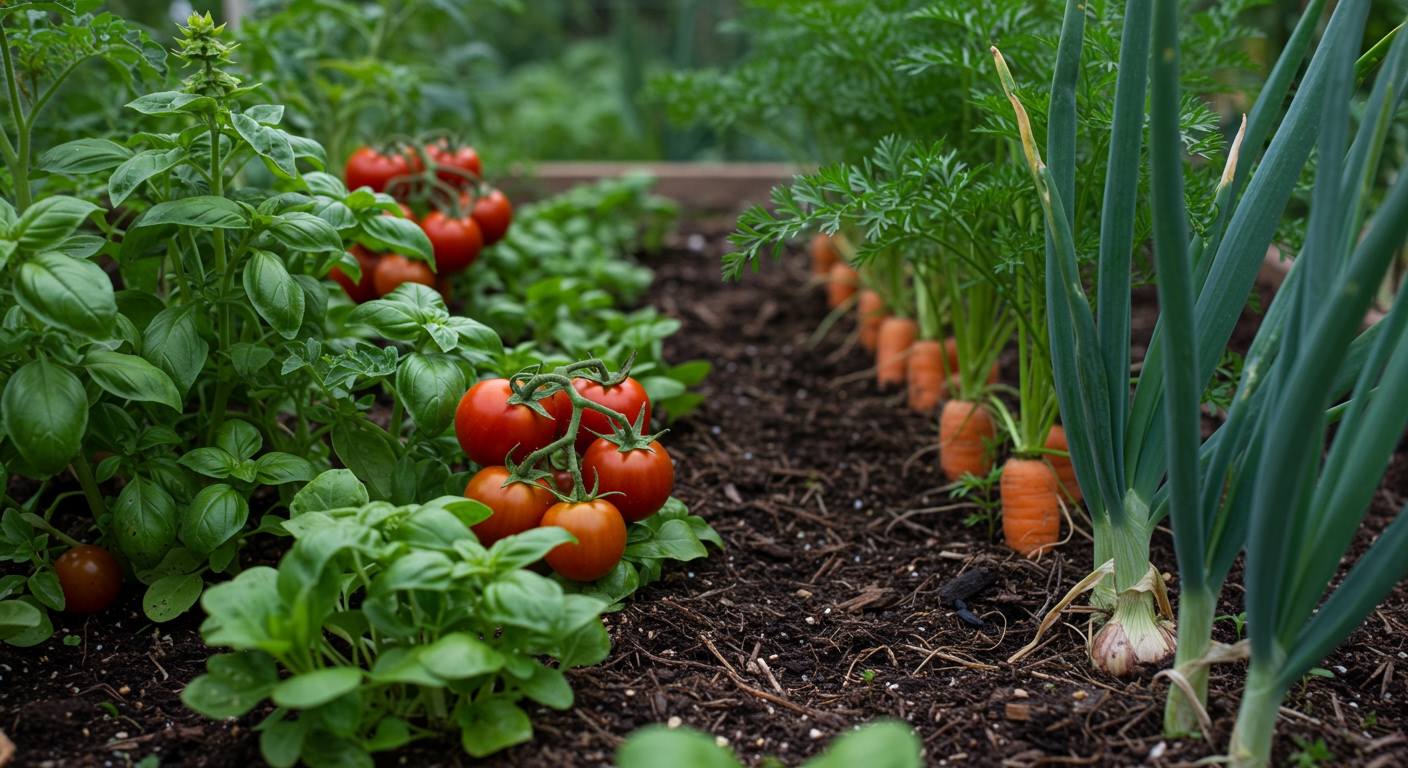
F. Root Vegetables (Carrots, Potatoes, Radishes)
- Carrots:
- Good Companions: Alliums (onions, garlic, chives, leeks – deter carrot rust fly, generally improve growth), lettuce, peas, rosemary, sage.
- Bad Companions: Dill (can stunt growth if too close).
- Potatoes:
- Good Companions: Beans/Peas (nitrogen), corn (shade), alyssum (beneficials), coriander/cilantro (repels potato beetles, aphids, spider mites), spinach, horseradish (disease resistance), garlic.
- Bad Companions: Tomatoes, cucumbers, squash, pumpkins, raspberries, sunflowers.
- Radishes:
- Good Companions: Carrots (space efficiency), cucumbers (repel cucumber beetles), beans (weed suppression), lettuce, onions, nasturtiums (trap crop).
- Bad Companions: Hyssop (can inhibit growth).
VI. Integrating Companion Planting into Your Garden Design
Now that you know the pairings, how do you put them into practice?
- Mapping Your Vegetable Garden: Plan your layout considering sun exposure, water needs, and compatible companion pairings. Sketching it out beforehand can be incredibly helpful.
- Intercropping Strategies: Don’t just plant in single rows! Mix different crops in the same bed or within rows. For example, plant rows of carrots between rows of onions to maximize space and mutual benefits.
- Vertical Gardening & Support Structures: Utilize tall plants like corn or sunflowers as natural trellises for climbing beans or cucumbers, making the most of vertical space.
- Raised Beds & Containers: Companion planting works beautifully in smaller spaces. Combine dwarf varieties of compatible plants to create miniature, productive ecosystems.
- Succession Planting & Living Mulch: As one crop finishes, plant a compatible living mulch or a succession crop that will benefit from the remaining nutrients and continue to support the soil.
VII. Common Mistakes & Troubleshooting
Even with the best intentions, it’s easy to make mistakes. Here’s what to watch out for:
- Overcrowding: The importance of adequate spacing cannot be overstated. Too many plants too close together leads to competition for resources and increases the risk of disease.
- Ignoring Plant Needs: Pairing plants with incompatible environmental requirements (e.g., sun-loving with shade-loving, heavy waterers with drought-tolerant) will lead to disappointment.
- Blindly Following Charts: Use this companion planting guide for vegetable gardens as a starting point, but always emphasize observation and local adaptation over rigid rules. Your microclimate and soil are unique!
- Forgetting Crop Rotation: Companion planting is not a replacement for rotating plant families. Continue this essential practice to prevent pest and disease buildup and maintain soil fertility.
- Invasive Companions: Aggressive plants like mint or comfrey need careful management, often requiring containerization, to prevent them from choking out their neighbors.
- Watering Compatibility: Group plants with similar irrigation needs to simplify watering and prevent over or under-watering certain species.

VIII. Beyond the Basics: Advanced Companion Planting Strategies
For the truly ambitious gardener, here are ways to deepen your companion planting game:
- Permaculture Principles: Integrate companion planting into a holistic, self-sustaining garden ecosystem, focusing on perennial plants and long-term resilience.
- Biodiversity Hotspots: Designate specific areas, perhaps a corner of a bed, solely for attracting beneficial insects by planting a dense mix of diverse flowers and herbs.
- Dynamic Accumulators: These are plants (like comfrey or borage) that draw up nutrients from deep soil layers, making them available to shallower-rooted plants when they decompose or are chopped and dropped as mulch.
- Cover Cropping with Purpose: Utilize specific cover crops between main growing seasons to improve soil health, add nitrogen, suppress weeds, and even deter overwintering pests.
IX. Conclusion: Your Journey to a Healthier, More Productive Garden
As you’ve seen, mastering companion planting is a powerful step towards sustainable, organic gardening. It’s about harnessing nature’s wisdom to create a vibrant, resilient ecosystem right in your backyard. This detailed companion planting guide for vegetable gardens has equipped you with the knowledge to get started.
We encourage you to experiment, observe closely, and learn from your own unique garden. Start small, choose a few pairings, and enjoy the journey of cultivating a healthier, more productive vegetable garden season after season.
References
- [1] Smith, J. (2023). The Magic of Nitrogen Fixation in Legumes. GreenThumb Journal.
- [2] Johnson, A. (2022). Organic Strategies for Disease Prevention in Vegetable Gardens. Sustainable Farming Institute.
- [3] Davis, R. (2021). Interaction of Beans and Peppers in Mixed Cropping Systems. Agronomy Research Quarterly.


